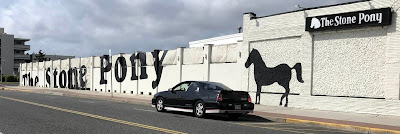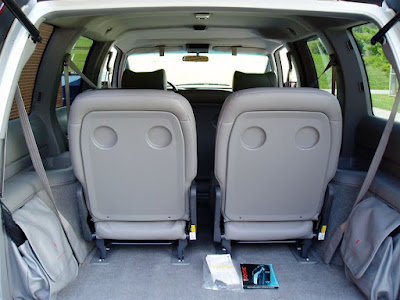The other morning, I got to thinking about how I've been able to put almost two-hundred forty-thousand miles on my 2002 Dale Earnhardt Chevrolet Monte Carlo SS. Obviously, I have to be doing something right. Right?
There's the cliche about "changing the oil regularly" which of course I do. And I do myself. I don't do it to save money - that's all but a wash these days. I do it to make sure it's done correctly and thoroughly. Seriously, you think those five-minute oil change places are really letting all the old oil drain out before they put the new stuff in? You sure they changed the filter too? I've always felt they spend more time up-selling you on stuff than actually doing anything. Speaking of which, are you sure they actually did any of the work they claim to have done?
There's bunk too about changing your oil every three-thousand miles too. I think that's excessive and expensive. Unless you're an Uber driver or whatever and most of your traipses are local or are "city-driving". Most of my driving is interstate and I rarely if ever change my oil with anything less than six-thousand and most often seven-thousand miles between changes. Hey, just saying. Remember, I'm the guy with (almost) 240K on his twenty-year old car and it runs as smooth as the day I first got it back in 2010.
I've stayed on top of things that needed repairing as well. And the one or two times that major repairs needed to be done that I opted not to do myself, looking at you upper and lower intake manifold gaskets, my wife and I weighed the pros and cons of footing the bill for the repair or fixing a one-thousand-dollar problem with a twenty-five-thousand-dollar or more solution.
I also, despite its age and mileage, still love this car. And, no, it's not because it's a "Dale Earnhardt" either. I could care less about NASCAR and have very little knowledge of the man my car is decorated after; may he rest in peace. I love my car, in lieu of all that. I do, honestly, still get a kick out of all the attention it continues to get.
All that said, and this has not been a Japanese built bastion of automobile reliability, the single most important thing about vehicle longevity is...(dramatic pause), the way you drive it.
Again, most of the miles on my car have been highway miles and not the grinding, stop-and-go of city driving. At seventy, seventy-five miles per hour, my engine, GM's wonderful 3800 Series II V-6 (not supercharged), is loafing along around twenty-one or twenty-two hundred rpm's. Shoot, darn thing is hardly breaking a sweat. Stress kills but it's not going to kill "The Dale". Rust might, but stress? No way.
Around town I never jack-rabbit away from stops either; I've never "floored it" (the gas) as well. What's the point of that anyway? Sure, "The Dale" may look fast but trust me, while the power is adequate, it's far from generous.
Furthermore, I never slam the doors or trunk lid although I can't say my family does the same. A gentle, fatherly admonishment follows anytime one of them slams a door, the trunk lid or even the hood. What did my car ever do to them anyway that would make them slam it as hard as they sometimes do? Slam a door on my hand but don't slam a door, hood or trunk on my car.
Luck also plays a role in this too. Knocking on injection molded plastic, I've never had an accident that took the good old boy out of commission permanently. An occasional minor fender bender every now and then but nothing serious. That and catastrophic, random mechanical failure as well for certain I'm not the only person who changes their own oil and drives like a ninety-nine-year-old. Shit, as they say, happens.
Who knows how far "The Dale" will go. I have no intention of getting rid of it in the near future and would even consider an engine rebuild or swap if need be. The check engine light is on and it's due, last I deduced, to a faulty catalytic converter I can have swapped that out at a muffler shop in Cleveland for around $250. If it's more than that I can always drive through the ridiculous Ohio loophole that allows us owners of older, high-mileage cars to get a waiver if we've spent $300 or more trying to fix our emissions systems so our cars pass the bi-annual echeck.
Seems like a pretty good investment to me, don't you?






















































